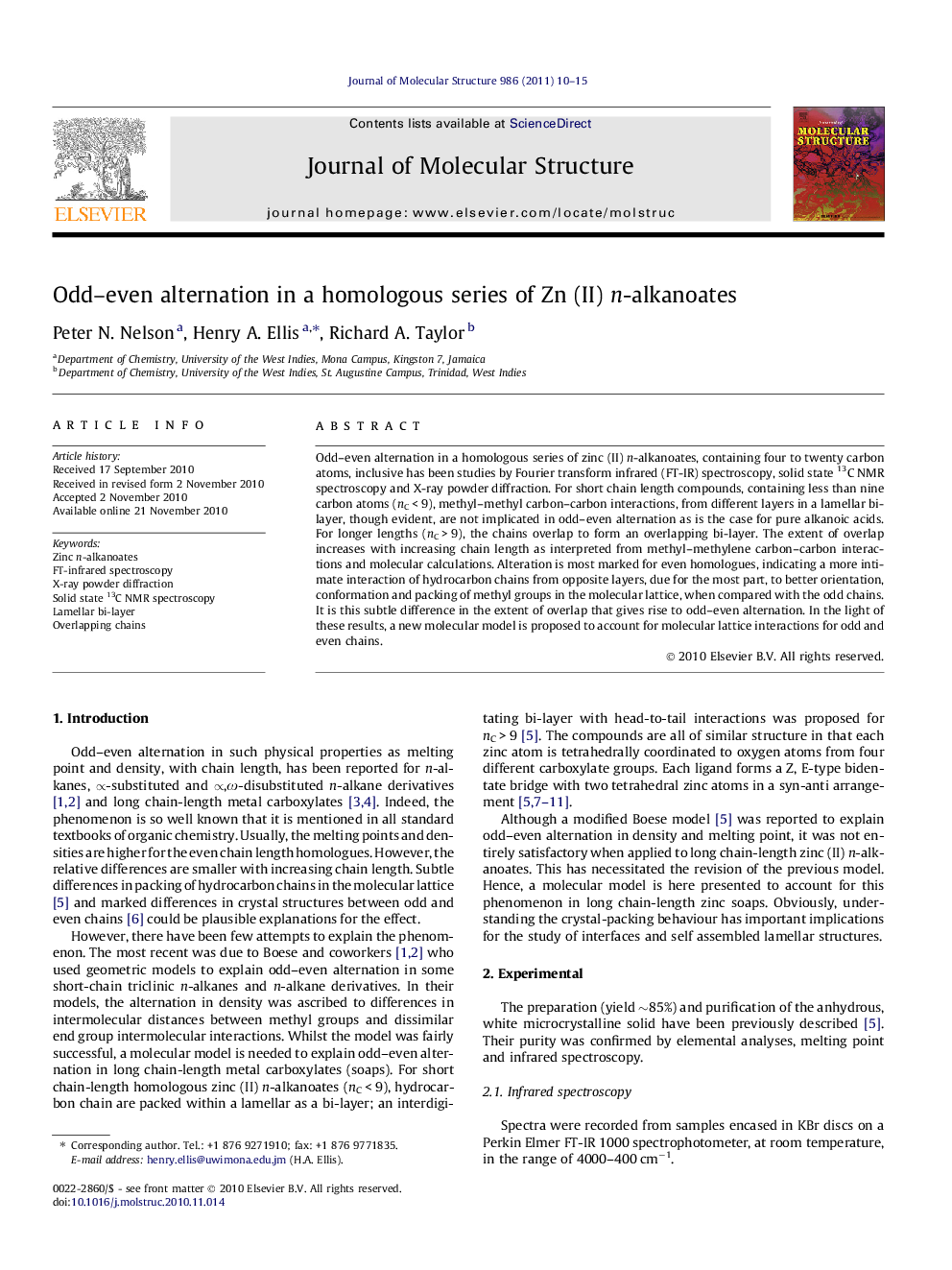| Article ID | Journal | Published Year | Pages | File Type |
|---|---|---|---|---|
| 1410667 | Journal of Molecular Structure | 2011 | 6 Pages |
Odd–even alternation in a homologous series of zinc (II) n-alkanoates, containing four to twenty carbon atoms, inclusive has been studies by Fourier transform infrared (FT-IR) spectroscopy, solid state 13C NMR spectroscopy and X-ray powder diffraction. For short chain length compounds, containing less than nine carbon atoms (nC < 9), methyl–methyl carbon–carbon interactions, from different layers in a lamellar bi-layer, though evident, are not implicated in odd–even alternation as is the case for pure alkanoic acids. For longer lengths (nC > 9), the chains overlap to form an overlapping bi-layer. The extent of overlap increases with increasing chain length as interpreted from methyl–methylene carbon–carbon interactions and molecular calculations. Alteration is most marked for even homologues, indicating a more intimate interaction of hydrocarbon chains from opposite layers, due for the most part, to better orientation, conformation and packing of methyl groups in the molecular lattice, when compared with the odd chains. It is this subtle difference in the extent of overlap that gives rise to odd–even alternation. In the light of these results, a new molecular model is proposed to account for molecular lattice interactions for odd and even chains.
